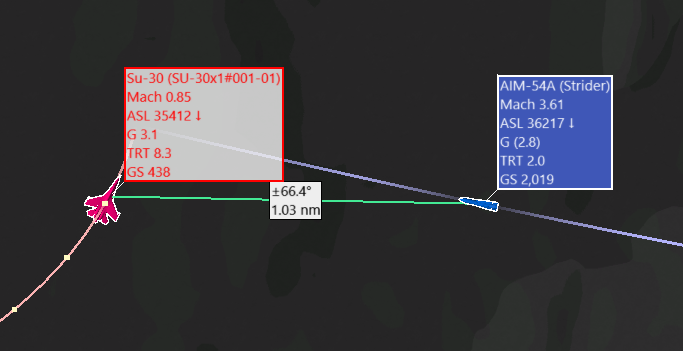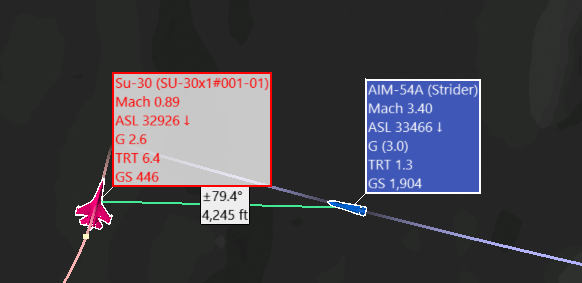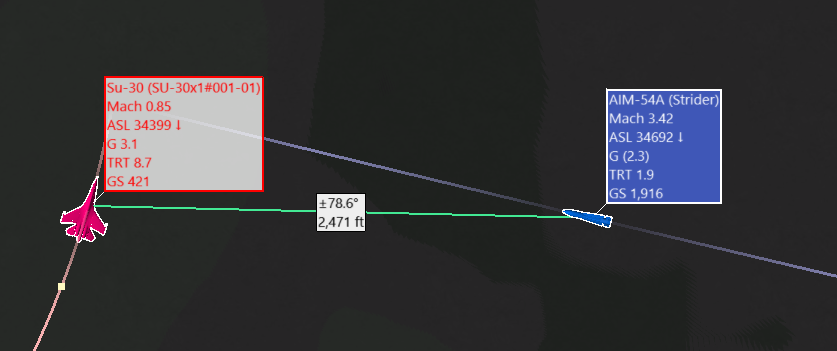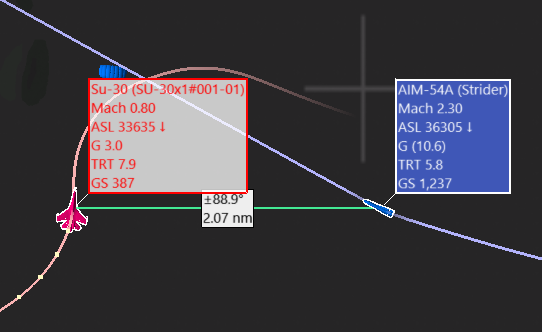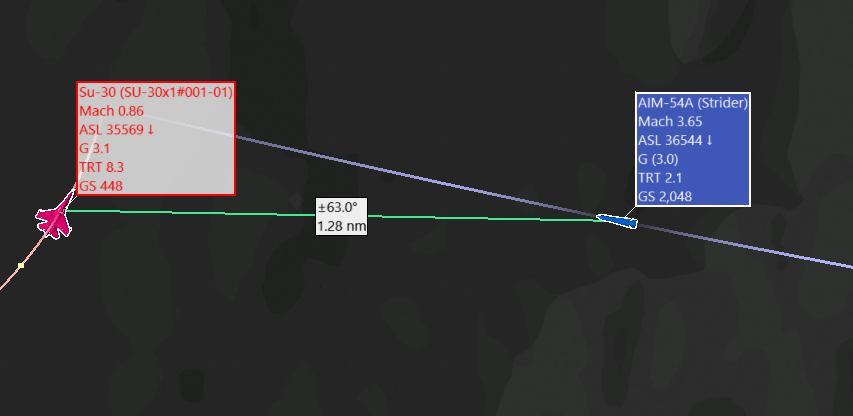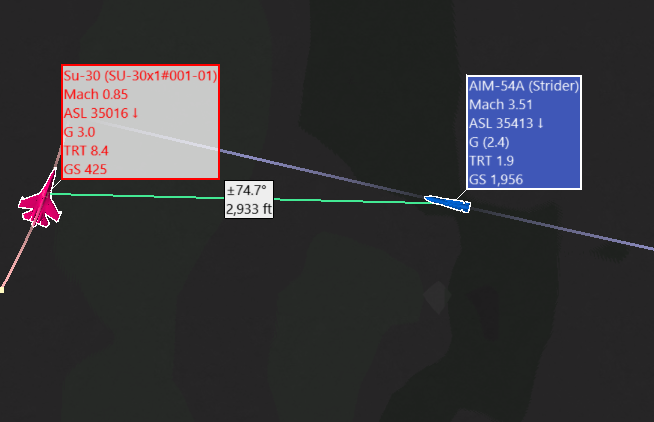

Strider21
Members-
Posts
91 -
Joined
-
Last visited
-
Information on EA features will be available soon? Why the rush to open up pre-orders then? ED should only open up pre-orders when they are ready to provide information on what the product will entail.
-
Is this statement still true? [bolded text] The newsletter today only mentioned $14.99 as the discounted price.
-
Your example is contrary to how the fuel ladder in cyclic ops in calculated here (written by a couple hornet pilots): https://drive.google.com/file/d/1gCUyoDQ-DGGBCFEOvgpER9L1w7hc0TT5/view In it the fuel on the bottom of ladder is not related to max trap but to tank state (as set by CAG) plus the fuel required for a set number of passes he requires. These numbers do not change with aircraft GW. The fuel ladder is very much about tracking your min fuel required plus a required fuel reserve. Max trap weight plays a factor but two aircraft of the same type on the same mission should have the same fuel ladder and it shouldn't change on the current aircraft payload.
-
Still doesn't max sense. I do think that max trap plays a role in calculating your fuel ladder but there must also be a caveat for a required fuel for a divert or hold time if operating blue water. What you are saying is that your fuel ladder changes pre and post strike. Which would lead to situations where you could be above your fuel ladder and therefore cruising around at .7 Mach drop you bombs and now suddenly you are below your fuel ladder because your fuel required at the ball just increased and therefore have to suddenly switch to max conserve. There is a piece of information missing in how Reflected has explained the fuel ladder. To be clear what I am saying is it doesn't make sense that you would need to hold a higher fuel reserve the lighter your aircraft weighs which is the implication in how it was explained in the video.
-
Do tell. An example of my point. If you follow Reflected's procedure and use his cycle times. You launch with a loadout of 2xAIM-9, 1xAIM-54, LANTRIN, 1xGBU-24 and 2x XT you get Max Trap with roughly 4600 lbs of Fuel. So your fuel ladder would be: 30 | 10.1 45 | 9.0 0700 | 7.9 15 | 6.8 30 | 5.7 45 | 4.6 Which means the min fuel you need to take off with is 10.1 and once you get below the fuel ladder you need to switch to max conserve. In this scenario you arrive at the ball with a min fuel of 4600 lbs or roughly 1.0 hrs of flying time at max conserve (not accounting for unusable fuel in the tanks). However if you launch with a clean jet with only two tanks you get Max Trap with roughly 9200 lbs of fuel. So your fuel ladder would be: 30 | 14.7 45 | 13.6 0700 | 12.5 15 | 11.4 30 | 10.3 45 | 9.2 Which means the min fuel you need to take off with is 14.1 and once you get below the fuel ladder you need to switch to max conserve. In this scenario you arrive at the ball with a min fuel of 9200 lbs or roughly 2.0 hrs of flying time at max conserve (not accounting for unusable fuel in the tanks). Why are you holding an additional hour fuel reserve because you are launching with a lighter payload? Why do you need to go max conserve 4600 lbs earlier?
-
Good video however your explanation of the fuel ladder where you add fuel to the ladder for ordnance dropped doesn't make sense. For example, if you launch on a mission with 2xGBU-10s, then drop them on the mission you add 4000 lbs to your fuel ladder? Or almost an hour flight time at max conserve? Which means you start flying at max conserve almost an hour earlier than if you didn't drop you the weapons? That doesn't make sense for mission planning ie you plan to land with close to two hours of fuel remaining? You are basically saying the less ordinance you have the morel fuel you hold in reserve. If you take off with just tanks you need to hold a larger fuel reserve than if you take off at max take-off weight?
-
Depending on the scenario you are trying to create the default Liberation loadouts need to be edited. For example, the default loadout for the F-14A CAP is 6x AIM-54. So if you fly against Iran you are going to face a bunch of Tomcats with 6 x AIM-54 which I don't find realistic especially if you are going for a 90s/00s US vs Iran scenario where Iran's AIM-54 inventory would be much depleted. For 1995 Russia, I would recommend you either swap out the Mig-29S for Mig-29As in faction ini or adjust to the Mig-29S loadouts (loadout ini) to be 4xR-73 and 2xR-27. This is what we are seeing the UAF flying on their Mig-29s which by and large date back to the late 80s early 90s. I think this would provide a more "realistic" opposition for the mid-90s F-14. IMHO
-
IRL the primary percentage threats the F-14A/B faced were the Mig-21, Mig-23, Mig-25, Mirage F1 and to a limited degree early variants of the Mig-29 and Su-27. Comparing the AIM-54 to the R-77 is not really a historical comparison. While the R-77 was developed in the 1980s/90s, due to the collapse of the Soviet Union it didn't enter service in any meaningful numbers until the mid-2000s. Through the 1980s the majority of Soviet fighters would be the Mig-21/23. Compared to the R-23 the AIM-54C offers a massive range advantage likewise against the R-27. The AIM-54 was retired in 2004 and the Tomcat in 2006. Also keep in the mind RWR performance (particularly of GEN III and early GEN IV REDFOR) does not match the historical record from the Iran/Iraq war. Many of the AIM-54A kills made by Iranian Tomcats were against targets that were unaware they were under attack and took no evasive maneuvers, whereas in DCS every AI fighter will have a perfect knowledge of an inbound missile and will evade into a perfect notch or defense within a second of the missile going active. This behavior has a huge impact of DCS missiles percentage kill leading to conclusions that the missile is performance is worse than reality (within the limits of what we know in the open source).
-

Any news on the A6 AI that was shown off in-game over a year ago?
Strider21 replied to XCNuse's topic in Heatblur Simulations
I think we all get timelines change due to unforeseen circumstances but HB had indicated that the F-14 would be out of access in March 2021 which included the AI A-6 and the two campaigns. We are now a over a year later. I can't speak for others, but I don't think it is unreasonable to ask for a simple update from HB on where it sits. Something like: "we plan to release it the next patch, we plan to release it Q2 2022 or we are working on it but don't think it will be released in 2022". Not sure if it is deliberate but HB haven't answered any questions on the state of the AI A-6 for a number of months. The lack of information/updates becomes worrisome particularly when HB has also said they have recently hired/onboarded a larger team and we should be shortly start seeing the fruits of the larger team (paraphrase). -
Any update on the AI A-6 as part of the F-14 product?
-
Not to beat a dead horse but I haven't seen any recent updates on the AI A-6. Is there any update to when the AI A-6E and KA-6D might be released? Thank you.
-
@IronMike @Cobra847 Any update on two items mentioned back in 2018? 1. Heatblur Forge "also as part of forge we are introducing our new dynamic cockpit system" (Pre-Order/Gameplay Reveal Trailer (Oct 2018)) 2. A-6 AI (Shoulder to Shoulder - A-6E AI for DCS World (Sept 2018). This was also mentioned last year May 2021 in the Heatblur Public Roadmap as the one of the "last remaining feature/content for the F-14" Both of items are coming up to four years since their announcement. Thank you for your engagement and dedication to the community.
-

AIM-54 Hotfix PSA and Feedback Thread - Guided Discussion
Strider21 replied to IronMike's topic in DCS: F-14A & B
near perfect AI notches that lead to hits: In all the misses the notch is not perfectly 90 deg but they miss rate is still drastically increased. I feel this isn't convincing you so with that I will lay it to rest. -

AIM-54 Hotfix PSA and Feedback Thread - Guided Discussion
Strider21 replied to IronMike's topic in DCS: F-14A & B
Here another 10 shots. First 5 at 40 NM 35K 0.98, crank at launch and skate at pitbull. The missiles went 1/5. This is what the four missies look like. All the same missile passes in front and above. Missile at Pitbull: Missile taking lead in response to the BANDIT: At this point it looks like the lead it is taking puts the target outside of the missile seeker FOV. Point at which the missile goes straight the target definitely appears outside of the missile seek FOV. I then did 5 shots at 25 NM at 35k MACH 0.98 and they went 5/5 hits. This basically what all the hits from 25 NM look like, missile at pitbull: End game of a hit. The Target looks to be in a near perfect NOTCH but the missile takes good lead and hits: Comparing the 25 NM hits to the 40 NM misses it looks like in the 25 NM shots the bandit is in better NOTCH but the hit ratio is drastically better. @IronMike I know I am beating a dead horse but to me the consistent misses where the missiles pass ahead look more like guidance bug than a successful AI notch. TACVIEW attached for critique. Tacview-20220218-071303-DCS-AIM54C Test .zip.acmi -

AIM-54 Hotfix PSA and Feedback Thread - Guided Discussion
Strider21 replied to IronMike's topic in DCS: F-14A & B
Thank you for you response and examples. Prior to the CFD update and HOTFIX for guidance when the missile was Notch'd it would go straight and level and pass behind the bandit. It now consistently passes in front of the bandit while pulling lead. Is this part of the guidance update? So 30 NM is not a good range? Further out where should I be firing and closer in where should I be firing? How do you figure out the range to fire at various speeds and altitudes?






